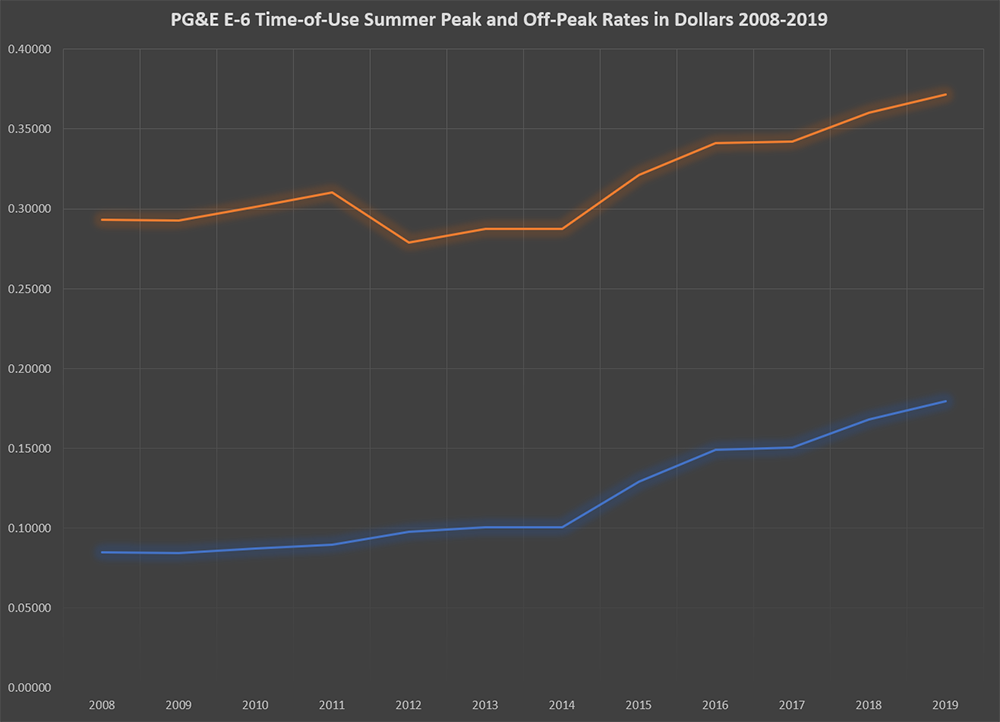I have not been on the program before, but my understanding is that as part of the NEM program PG&E only pays us the wholesale rate for any power we put in the grid. And these rates are around $0.04/kWh. Please let me know if I am wrong.
I think you're mixing up the excess production aspect of net metering with the time of use aspect of net metering.
For the sake of simplicity, let's pretend there's a household
without PV or Battery that uses 3,650 kWh per year... and all of that energy is consumed from 4pm to 9pm each day. And for simplicity that means 10 kWh used per day.
Now let's pretend this household adds a PV only system that generates 3,650 kWh per year. And let's use PG&E's
E-TOU-C times and E6 rates (see below)
When the sun is up, and the household isn't using anything, all that PV energy is sent to the grid at the TOU rate of energy at that time. On this rate plan, the house would be banking kWh at the "off peak rate" up until 4pm. So let's pretend the house banked 7 kWh from 6am to 4pm at $0.18 ($1.26)
But then at 4pm, the house starts to use consume energy toward that fake 10 kWh. From 4pm until 9pm, the PV produces 3 kWh but now the house needs to withdraw from the grid that 7 kWh it banked earlier. And that becomes the problem. The energy was banked with the off-peak rate, but is withdrawn at the peak rate of $0.37. So the cost of the 7 kWh used from the grid is $2.59. The homeowner owes the net difference of $1.33 (plus all the fees and overhang that PG&E charges the customer).
I know my example is extreme, but keep in mind there's nothing stopping PG&E from making it so that "peak" is 5pm to 10pm and then turn the peak rate to $0.50. The utilities have said they think rooftop solar needs to "pay its fair share" and they believe homeowners who install solar have unfairly raised costs for normal customers.
The $0.04 comes in if the PV generates 4,000 in a year but the home only uses 3,650. That 350 kWh is sold to PG&E at the wholesale rate with no overhead reimbursement for the homeowner's infrastructure investment.
It's not as bad as always banking at $0.04; but it's still a problem for most PV-only home since it's not an ideal net metering for the household even though the net generation vs consumption is likely zero for the year. And that's why installing batteries is so important. The customer isn't going to gouge themselves on energy rates so they get "true net metering" for the cost of their batteries. And the homeowner gains resiliency.
I'm sure someone has done the math and determined that the cost of batteries doesn't actually offset the delta between the peak/off-peak rates. But as I told my sales rep... if I'm going to get f*cked, I'd rather pay a clean energy company than pay PG&E.



